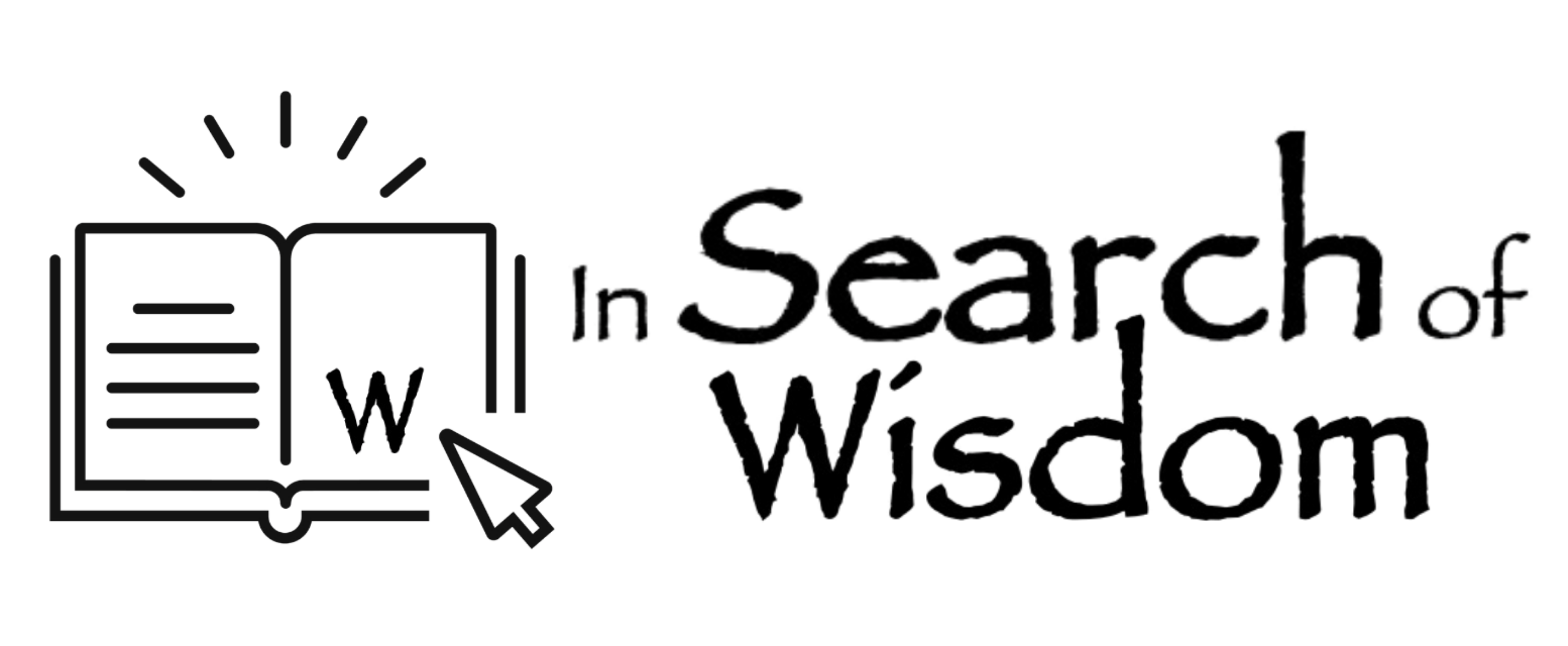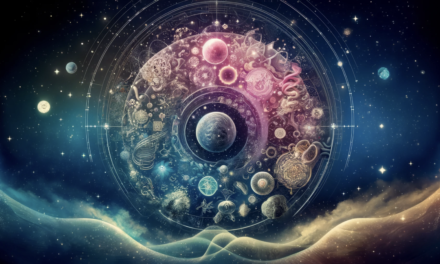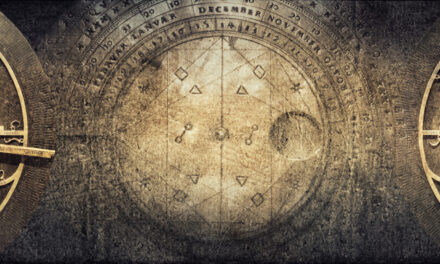‘Act 1: Physical Evolution
We don’t know how, but the entire universe began about 13.8 billion years ago, along with time itself. A concentration of explosive energy shot out an incandescent plasma of elementary particles that expanded unimaginably fast, cooling as it did so. Resisted by the force of gravity, minuscule imbalances in the plasma’s uniformity allowed particles to clump together to form hydrogen gas.
Whirling waves of gravity started to collect clouds of this gas together in the first spiral galaxies. Under intense pressure, hydrogen began fusing into helium, and the first stars were born. The energy of fusion is balanced by the force of gravity to create a dynamically stable structure. Energy flowing through matter created ever more complex structures from their simpler beginnings. In the nuclear furnaces of stars, for example, heavier elements like iron and carbon were forged.
After aeons of time, some of the first stars imploded in spectacular supernovae, creating yet more complex elements and spewing out great clouds of gas and dust to form the spectacular nebulae that we see today through the Hubble and James Webb telescopes. This physical evolution characterizes the first Act of creation and continues today in hundreds of billions of galaxies throughout the universe.
About 4.6 billion years ago, in the Milky Way Galaxy, our Sun and the solar system were formed out of one such cloud of gas and dust. We don’t know exactly how, but as it formed, it spun faster and faster with the Sun at its centre, forming discs which eventually clumped into the familiar planets. Four of them, made of heavier elements, formed the rocky planets: Mercury, Venus, Earth and Mars. The outer four consisted of the lighter elements and formed the ‘gas giants’: Jupiter, Saturn, Uranus and Neptune.
Act Two: Biological Evolution
As the distance from the Sun increases, the temperature falls, and on just one planet, the Earth, conditions were just right for the emergence of a particular kind of complex chemical. Organic molecules somehow began to form living structures, capable of generating their own energy and replicating themselves. With the emergence of life, the second Act of creation began.
Life was not only able to replicate itself, but it could also diversify. After about 2 billion years, single-cell prokaryotes led to more complex eukaryotes, which in turn allowed multi-cellular creatures to appear. Over time a staggering variety of diverse life forms emerged through a process of replication, variation, complexification, selection and evolution. Vertebrates, land plants, fish, insects, amphibians, reptiles, dinosaurs, mammals, birds and flowers each emerged from their predecessors.
Sometimes, changes to the Earth’s ecosystems caused species to die out, as they were no longer able to adapt to new environments. About sixty six million years ago, a meteor crashed into the Earth, and the resulting climate changes caused the dinosaurs to become extinct. Nevertheless, Biological Evolution characterizes the second Act of creation, and it continues today in places where our own species’ behaviour doesn’t prevent or adapt it.
Act Three: Cultural Evolution
Homo sapiens emerged from our primate ancestors about 300,000 years ago. Our most remarkable invention, the development of language and writing, ushered in the third Act of creation, characterized by Cultural Evolution. Like our ancestors, we are a social species, and language allowed us to maintain the coherence of much larger groups. It also enabled us to act with shared intentionality to achieve our family’s, tribe’s or clan’s goals. Writing enhanced our individual learning capability and permitted the creation of our historical memory.
The discovery of farming techniques allowed our species to prosper in a wider range of habitats and to create settlements that eventually became cities. Trade linked these cities together in an ever-widening network so that humanity was able to spread out over all the world’s continents. Our curiosity and creativity allowed us first to pay attention to and then to understand the patterns inherent in the world we inhabited. Our collective drive to understand was expressed through religion, philosophy and, eventually, mathematically-based science.
The Industrial Revolution of the late seventeenth century gave humanity a growing ability to use past stores of the Sun’s energy from fossil fuels. We could exploit the Earth’s animal, vegetable and mineral resources for the benefit of our species. And now, Cultural Evolution is advancing at a dizzying pace. Act One played out alone for 70% of all time, Act Two occupied the stage for a further 29.9%, and our own Act Three has taken less than one-third of one per cent.
Cosmically speaking, in the merest blink of an eye, we have learned enough to tell this tale. But have we learned enough to participate in Act Four?
Terry Cooke-Davies
December 2022






